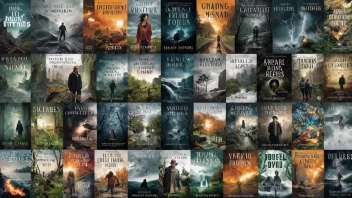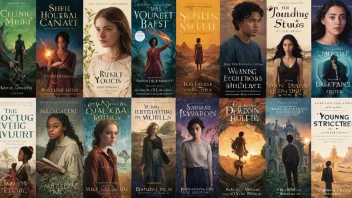In an era where digital media rapidly shapes the way we consume information, non-fiction books remain a vital source of knowledge, insight, and inspiration. The digital age has transformed our reading habits, offering unparalleled access to a wealth of content through blogs, articles, and social media. Yet, the enduring power of non-fiction literature persists, inviting readers to delve deeper into subjects that matter. This article explores the evolution of non-fiction in our contemporary landscape, highlighting its importance and relevance amid the noise of digital content. We will examine the unique attributes that non-fiction brings to the table, the genres that have gained momentum, and the voices that are shaping the future of this literary form.
Understanding Non-Fiction: A Reflection of Reality
Non-fiction literature is characterized by its commitment to presenting facts, events, and real-world experiences. Unlike fiction, which often weaves imaginative narratives, non-fiction aims to inform, educate, and sometimes persuade. This genre encompasses a wide range of formats, including memoirs, biographies, essays, journalism, and self-help books. Its versatility makes it an essential component of literary culture, as it not only reflects the complexities of reality but also fosters critical thinking and informed discourse.
The Impact of Digital Media on Non-Fiction
The rise of digital media has significantly affected how non-fiction is written, published, and consumed. With platforms like e-books, podcasts, and online articles, readers can access a vast array of non-fiction content at their fingertips. This accessibility has democratized knowledge, allowing diverse voices to contribute to the conversation. Authors can engage directly with their audience through social media, creating a sense of community and fostering discussions around important themes.
Accessibility and Convenience
Digital formats have transformed the reading experience, offering convenience that traditional print may not. E-books and audiobooks allow readers to consume content on the go, adapting to their lifestyles. This shift has made non-fiction more accessible to a broader audience, including individuals who may not have the time or inclination to read lengthy publications. The ability to highlight, annotate, and share insights online further enriches the reading experience, encouraging active engagement with the material.
Emergence of New Genres
As non-fiction evolves in the digital landscape, new genres and subgenres have emerged. For example, the rise of narrative non-fiction blends storytelling techniques with factual reporting, creating compelling narratives that engage readers emotionally while informing them. Similarly, the popularity of personal essays has surged, offering readers intimate glimpses into authors' lives and perspectives on contemporary issues. Furthermore, the intersection of non-fiction with visual media, such as graphic memoirs, has expanded the genre's reach and appeal.
Voices Shaping Modern Non-Fiction
Today, a diverse array of authors is redefining non-fiction, each bringing unique experiences and viewpoints to the table. These voices reflect a multiplicity of cultures, backgrounds, and areas of expertise, enriching the narrative landscape. Consider authors like Ta-Nehisi Coates, whose works such as "Between the World and Me" explore race and identity in America, or Michelle Obama, whose memoir "Becoming" resonates with readers for its authenticity and relatability. Each of these authors offers a fresh perspective, inviting readers to engage with critical social issues.
Influence of Social Media
Social media platforms have become crucial in promoting non-fiction literature and connecting authors with readers. Influencers and content creators often share book recommendations, fostering a culture of reading and discussion. Hashtags like #NonFictionNovember or #Bookstagram highlight the significance of non-fiction in contemporary literature, encouraging readers to explore various topics and genres. This digital ecosystem nurtures a dynamic relationship between authors and their audience, facilitating real-time feedback and dialogue.
The Future of Non-Fiction
As we look to the future, non-fiction literature will continue to evolve, driven by technological advancements and shifting reader preferences. The integration of multimedia elements—such as videos, podcasts, and interactive content—into non-fiction storytelling can enhance the reader's experience, making it more immersive and engaging. Furthermore, as society grapples with pressing issues like climate change, social justice, and mental health, non-fiction will play a pivotal role in disseminating information and inspiring action.
Challenges and Opportunities
While the digital era presents numerous opportunities for non-fiction authors, it also poses challenges. The abundance of online information can lead to misinformation and a lack of discernment among readers. Authors must navigate this landscape carefully, ensuring their work is well-researched and credible. However, this challenge also presents an opportunity for non-fiction writers to establish themselves as trusted sources of information, paving the way for thoughtful discourse and informed discussions.
Conclusion: Embracing Non-Fiction in a Digital World
Non-fiction literature remains a cornerstone of intellectual engagement, offering readers insights into the world around them. In the age of digital media, the genre has adapted and transformed, embracing new formats and reaching diverse audiences. As we continue to navigate this ever-changing landscape, the importance of non-fiction cannot be overstated. It invites us to explore, question, and understand our realities, fostering a love of reading that transcends the pages of a book. By celebrating the voices that shape modern non-fiction and encouraging critical thought, we can ensure that this genre remains a vital part of our literary culture.






